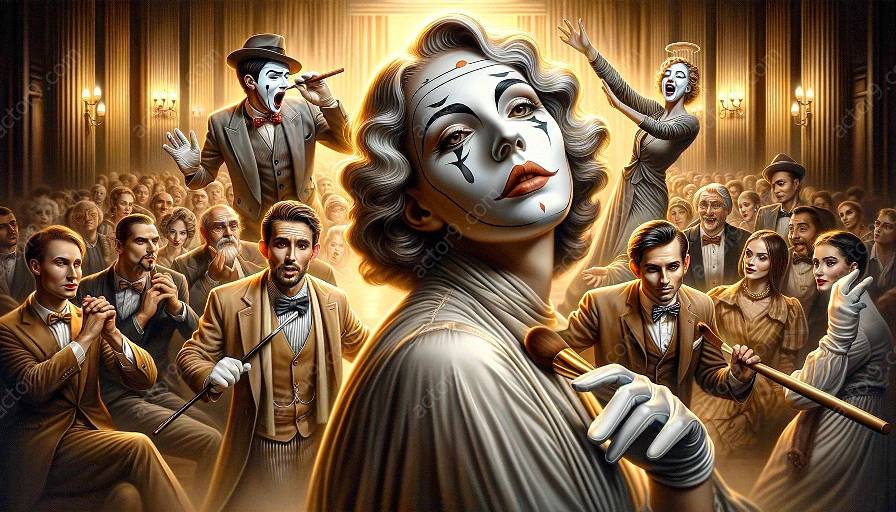Physical comedy and mime have a rich history in the realm of theatrical performances. This art form, which relies heavily on body language and exaggerated gestures, presents both unique challenges and extraordinary opportunities when integrated into modern theater productions. In this content cluster, we will delve into the multifaceted world of mime and physical comedy, examining the distinctive obstacles and advantages they present in contemporary theater.
Famous Mime Artists and Physical Comedians
Before delving into the challenges and opportunities, it's essential to acknowledge the influential figures who have shaped the world of mime and physical comedy. Renowned artists such as Marcel Marceau, Charlie Chaplin, and Buster Keaton have significantly contributed to the evolution of physical theatrical performance. Their innovative approaches have left a lasting impact on modern theater and continue to inspire contemporary artists.
Marcel Marceau: A Master of Mime
Marcel Marceau, often referred to as the "The Master of Mime," revolutionized the art form with his impeccable ability to express complex emotions and narratives solely through physical movements. His iconic character, Bip the Clown, remains a symbol of the power of mime in storytelling. Marceau's profound influence continues to be felt in theater productions around the world.
Charlie Chaplin and Buster Keaton: Pioneers of Physical Comedy
Charlie Chaplin and Buster Keaton, known for their unparalleled contributions to physical comedy, introduced a new dimension to storytelling through their comedic prowess. Their timeless performances and comedic timing have set the standard for modern physical comedians, laying the groundwork for the integration of physical humor in contemporary theater.
Mime and Physical Comedy: Challenges and Opportunities
Now, let's explore the unique challenges and opportunities associated with incorporating mime and physical comedy into modern theater productions. This dynamic art form presents creators with a range of complexities and possibilities that shape the theatrical landscape.
Challenges
Accessibility: One of the primary challenges lies in ensuring that mime and physical comedy are accessible to diverse audiences. Without the luxury of verbal communication, productions must navigate the potential barriers to understanding and engagement.
Training and Skill Development: Incorporating mime and physical comedy requires actors to undergo rigorous training to master the art form. This demands proficiency in body language, gesture, and physical control, posing a significant challenge for performers and directors alike.
Relevance in Contemporary Context: Adapting mime and physical comedy to align with modern themes and narratives presents a distinct challenge. Creators must navigate the task of infusing these traditional art forms with relevance and resonance within the contemporary cultural landscape.
Opportunities
Expressive Potential: Mime and physical comedy offer an unparalleled capacity for expression, allowing performers to convey intricate emotions and narratives through body language alone. This presents an extraordinary opportunity to evoke profound emotional responses from audiences.
Innovative Storytelling: The incorporation of mime and physical comedy opens the door to innovative storytelling techniques. By harnessing the power of nonverbal communication, creators can explore unconventional narrative structures and engage audiences in new and compelling ways.
Cross-Cultural Appeal: Mime and physical comedy have a universal appeal that transcends cultural and linguistic barriers. This provides an opportunity to captivate diverse audiences across the globe, fostering a sense of shared experience and connection.
Conclusion
The integration of mime and physical comedy into modern theater productions presents a rich tapestry of challenges and opportunities. While navigating the complexities of accessibility, training, and relevance, creators are also poised to unlock the expressive potential of nonverbal communication, engage in innovative storytelling, and captivate audiences on a global scale. Through the lens of famous mime artists and physical comedians, contemporary theater continues to evolve, embracing the enduring influence of this timeless art form.


























